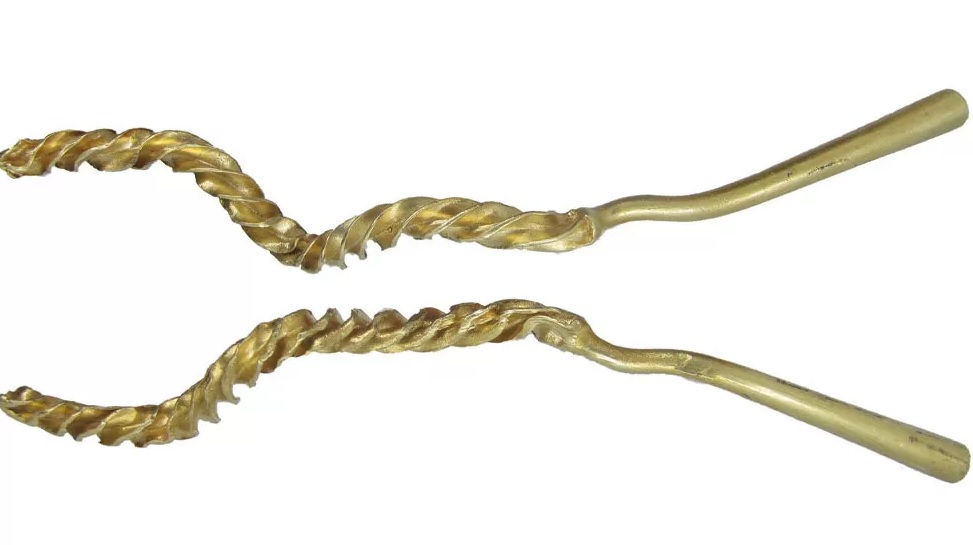Co 147 cm?Proboha jakou to mělo váhu?Namotat si na krk metr a půl zlata tak se ani nezvednu z postele.
A gold necklace discovered in a field
Categories: Nálezy nejenom s detektorem ve Velké Británii a Irsku
A prospector with a metal detector discovered part of a gold necklace near Mistley (a village and civil parish in the Tendring district of north-east Essex). According to experts, it is around 3,000 years old and is very rare. The jewel has been declared a treasure.
A fragment of the twisted necklace was discovered by a prospector using a metal detector in a field near a river. Liaison officer Lori Rogerson said it was a stunning find. "Bronze Age goldwork is very rare in Essex," Rogerson said.
The identity of the prospector who found the jewellery has not been released. Experts were delighted with the find. "It's always amazing when you can work with prehistoric gold," the officer in charge added about the discovery of the gold necklace. According to them, this is the first gold necklace from Essex to be declared a treasure.
A prospector with a metal detector reported the discovery of the necklace to the Portable Antiquities Scheme (PAS) three years ago. Experts at the British Museum confirmed the jewellery was made of at least 75 per cent gold, about 18 per cent silver and a small amount of copper. The necklace found is 147 centimetres long. According to Rogerson, it was made by a very skilled and qualified goldsmith. He used a rectangular bar with grooves.
"The goldsmith knew very well how to handle the metal so that it would not crack during such a difficult process. Hence, I believe he was a very skilled and qualified person," the liaison officer added about the find.
Colchester Museum is currently interested in the jewel. The reason for this is that Bronze Age gold is rarely found not only in Essex but throughout England. This particular piece of gold jewellery has been found in Essex after more than thirty years. The museum has only eight Bronze Age gold objects in its collection.
One of the objects is the so-called Sheepen Cauldron, a Bronze Age cauldron on display at Colchester Castle. Unlike this artefact, the gold necklet had a less practical use. It was worn by a wealthy and prominent individual.
"Colchester Museum hopes to acquire the new find as it would significantly expand the collection and our knowledge of Essex's Bronze Age and Forgeemperors who made incredible objects like the gold necklace," Michelle Burrows, from Colchester Museum, believes they will acquire the rare piece of jewellery.
It is not known what circumstances led to the necklace being taken from the river near Mistley. Although it is thousands of years old, experts say it is very well preserved indeed. Colchester Museum believes it has a real chance of getting the necklace for its collection.
Sources: www.harwichandmanningtreestandard.co.uk, www.bbc.com, www.dailymail.co.uk

The article is included in categories:
- Archive of articles > Archaeology > Finds and rescue research abroad > Nálezy nejenom s detektorem ve Velké Británii a Irsku
Post
Hledač s detektorem kovu objevil poblíž Mistley (vesnice a civilní farnost v okrese Tendring na severovýchodě Essexu) část zlatého nákrčníku.
Část co má 147cm to bych rád viděl komplet,ale běžná praxe něco někdo okopčí,přeloží přes překladač.Důležité je autor článku a zdroj.
škoda, že i u nás nemáme sličné důstojnice 
The torc, which is 147mm-long (5.7in) long, was crafted from a rectangular rod with four grooves cut into it.
No myslel jsem si to. 







